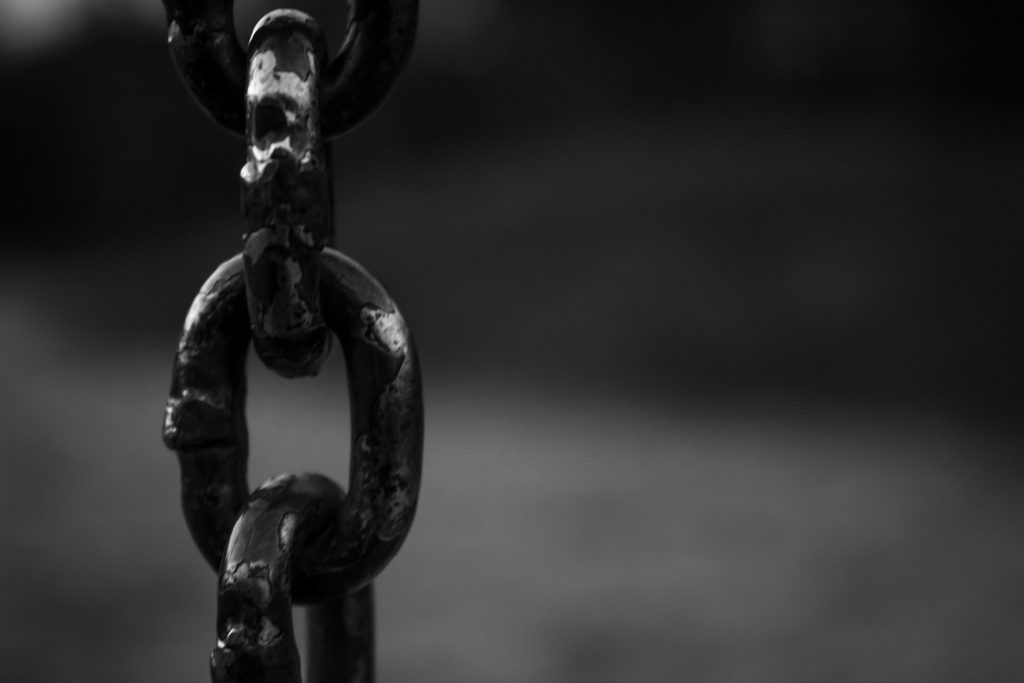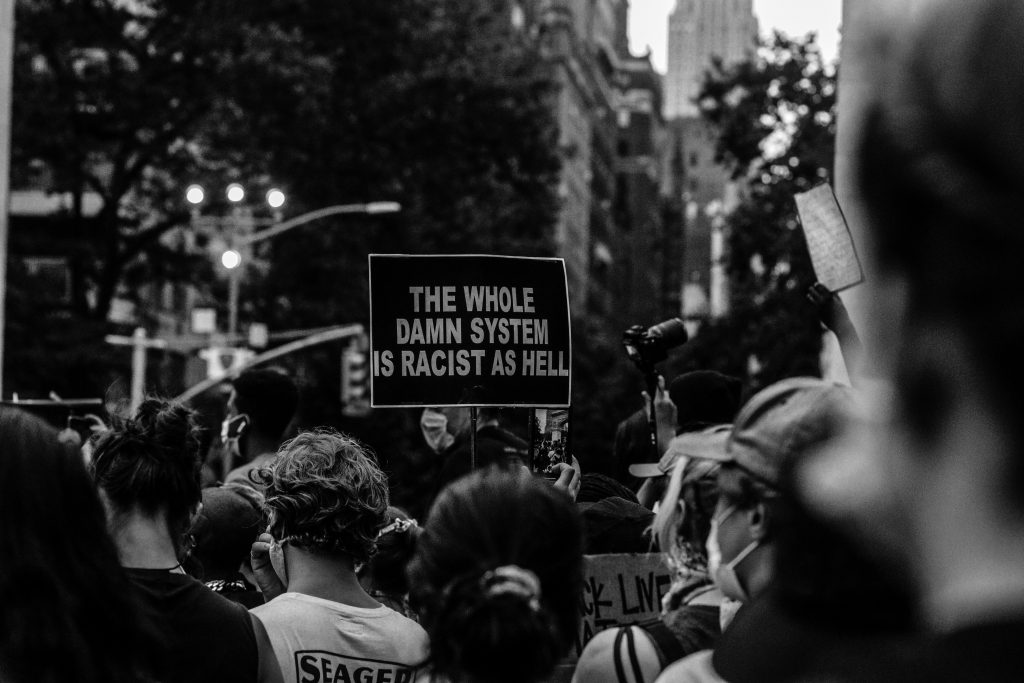
08 Apr Racist Prison Names Highlight the Path from Slavery to Mass Incarceration
The United States is notorious both for its violent history of slavery and its legacy of mass incarceration. For many activists, this history is well-known. When slavery ended in the South, prisons arose as a way to perpetuate slave labor by leasing out convicts. Wardens pocketed the money, and prisoners worked themselves to death. But amid protests and calls to reform the American justice system, organizations are dropping their racist namesakes. With many facilities carrying racist prison names, some are wondering when state and federal penitentiaries will shed that legacy.
American Prison System Entrenched in Racism and Brutality
As part of the 1619 project, Bryan Stevenson chronicled the ways in which our prison system perpetuates systemic racism. In his article, he claims that this system gave Americans a taste for violent punishment. The United States puts more people in prison per capita than any other nation. Almost one-quarter of all imprisoned people worldwide are in American prisons. Over the past fifty years, the United States prison population ballooned from about 300,000 to over 2 million. This “tough on crime” era directly follows the Civil Rights movement that dominated headlines throughout the 1960s. That’s no accident. Many argue that American prisons are a modern form of slavery and that the system is designed to reinforce white supremacy.
More than one hundred years before the American Revolution, all Black people in the Maryland province were sentenced to a life of hard labor according to Stevenson. Some of the approved punishments for enslaved people included amputating hands, beheading, and even quartering. Slave owners often displayed these dismembered bodies as a warning to other slaves. The practice normalized state-sanctioned violence in America. Since the law did not see slaves as human beings, Americans accepted violent punishment for them. While slavery officially ended following the Civil War, laws around the South continued to target Black people. The rhetoric around these laws recast Black Americans as criminals, justifying continued violence at the hands of the state.

Texas honors Thomas J. Goree, who owned slaves and served in the Confederate Army, by naming a state prison after him.
Just after the Civil War, Thomas J. Goree became one of the first superintendents of the Texas prison system. He didn’t just sponsor state-sanctioned violence. He encouraged it. Goree also helped popularize convict leasing, a program that replaced slaves with prisoners. One of the benefits of the program, according to Goree, was that working slaves to death cost landowners money. Convicts, on the other hand, could be a renewable resource of sorts. Business owners could work them to death, then simply replace them with new convicts. This inspired widespread violence, including whipping and beating convicts. Prison staff used terrifying torture methods, which Goree defended.
Speaking about some of the more brutal tactics, Goree said, “There are, of course, many men in the penitentiary who will not be managed by kindness.” Furthermore, Goree explicitly justified this violence because most Texas prisoners were Black. He argued that prisoners in the South deserved such treatment, while those in the North warranted less brutal tactics because most of them were white. In many ways, Goree openly recognized the American prison system as an extension of slavery. Now, a prison unit in Huntsville carries his name. As if that’s not enough, Texas converted his family’s former slave plantation into a separate prison. Texas also named the facility after landowners who benefited from convict leasing.
States Routinely Name Prisons After Violent and Storied Racists
As it turns out, Texas has a history of naming facilities after former prison staff with a penchant for violence. Thomas J. Goree may be one of the most famous, but he’s far from the only racist warden Texas prisons honor. The Billy Moore unit and Wallace Pack unit both honor men killed while trying to murder Eroy Brown, a Black prisoner. According to Brown, warden Wallace Pack drove him to a drainage ditch. There, Pack handcuffed Brown and threatened to kill him. Billy Moore, a farm manager, aided Pack. Fearing for his life, Brown fought the men until Moore lay dead from a gunshot wound and Pack drowned in the ditch. Texas prosecutors maintain that the killings were murder, but three separate juries acquitted Eroy Brown of all charges.
Of course, Texas is not the only state that draws on plantations and racist community members for its prison names. One of the most well-known prisons in America, Riker’s Island, honors the Riker family. Richard Riker, who served as a judge, was part of a group that kidnapped free Black people and sent them into slavery. The Draper Correctional Facility in Alabama is named after a former Ku Klux Klan leader. So is Forrest City, Arkansas, where two federal prisons honor Nathaniel Bedford Forrest. Across the South, states converted former plantations into prisons, often putting Black convicts to work in the same fields where slaves once worked.
Formerprisoners argue that these names perpetuate white supremacy inside prison walls.
According to Anthony Graves, who was wrongfully convicted of murder and spent more than a decade on death row, “The mentality in these prisons is still, ‘This is my plantation and you are my slaves.’ To change that we have to start somewhere and maybe if we change the name, we can start to change the culture.” Graves may be onto something. Names may seem like the least of the problems plaguing American prisons. However, it’s impossible to move away from the juxtaposition of racism and incarceration so long as prisons bear the names of those who helped perpetuate that violent history.

Vera attributes the modern era of mass incarceration directly to rhetoric used during campaigns throughout the 1970s. They argue that politicians deliberately highlighted rising crime rates to justify stricter sentencing laws. As courts imposed mandatory minimums, prison populations swelled. This forced prison staff to contend with far more prisoners than most prisons are equipped to handle. It also perpetuated perceptions that Black citizens commit crime at higher rates, while the reality is that laws specifically targeted Black and Latino populations disproportionately.
Throughout the first half of the 20th century, the Vera report notes, prisons focused on convict leasing programs. These programs offset the end of slavery, filling a necessary need for free labor. By the 1960s, though, political leaders began using scare tactics to frighten the American public into supporting “tough on crime” policies. Barry Goldwater, speaking at the Republican National Convention in 1964, warned that police must “keep the streets from bullies and marauders.” Four years later, then-candidate Richard Nixon promised to “open a new front against the filth peddlers and the narcotics peddlers who are corrupting the lives of the children of this country.”
Politicians use coded language to frame Civil Rights activists and Black communities as hotbeds for criminal activity.
Notably, Former President Nixon referenced Civil Rights numerous times in his acceptance speech. Pairing this phrase with warnings about the danger to American children served to cast Black citizens, and Black men in particular, as violent threats to the American way of life. It laid the groundwork for phrases like “super predator” and policies like the three-strikes rule. And it worked. By 2008, Vera notes, there were 6.5 times more Black male prisoners than white males in American prisons. For the entire history of the American prison system, laws have maintained largely disparate populations. This further illustrates that one of the core principles of incarceration, at least in practice if not in intent, in the United States is the control of Black citizens.
With many states pursuing significant police and justice reform policies, the time has come to address the racist history of American prisons embedded in the names of facilities themselves. Overturning mandatory minimums and decriminalizing addiction show that Americans want systemic reform. Most now recognize the relationship between oppressive policies and the continued incarceration of Black citizens. Legislators are throwing their support behind policies that will effectively end mass incarceration. Even accountability inside prisons is increasing. Now, states have an opportunity to take the step to end their long history of elevating violent racists through the naming of prisons and prison units.

